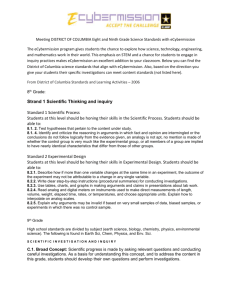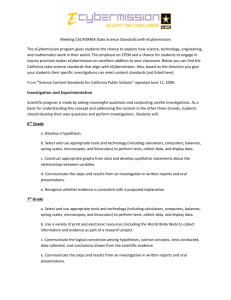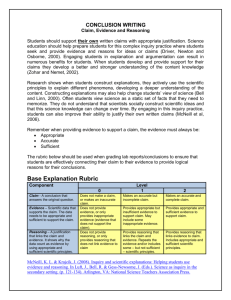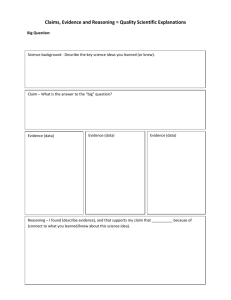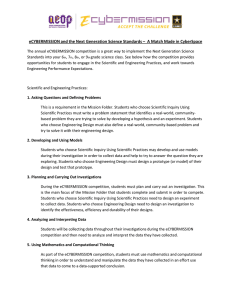Texas - eCYBERMISSION
advertisement
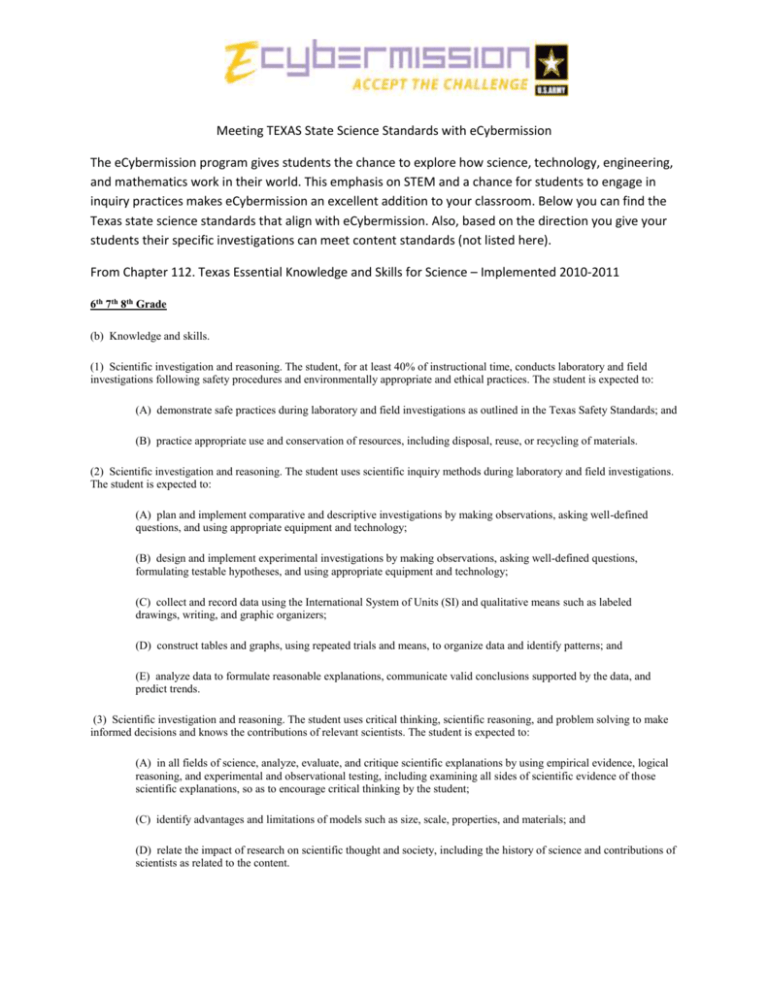
Meeting TEXAS State Science Standards with eCybermission The eCybermission program gives students the chance to explore how science, technology, engineering, and mathematics work in their world. This emphasis on STEM and a chance for students to engage in inquiry practices makes eCybermission an excellent addition to your classroom. Below you can find the Texas state science standards that align with eCybermission. Also, based on the direction you give your students their specific investigations can meet content standards (not listed here). From Chapter 112. Texas Essential Knowledge and Skills for Science – Implemented 2010-2011 6th 7th 8th Grade (b) Knowledge and skills. (1) Scientific investigation and reasoning. The student, for at least 40% of instructional time, conducts laboratory and field investigations following safety procedures and environmentally appropriate and ethical practices. The student is expected to: (A) demonstrate safe practices during laboratory and field investigations as outlined in the Texas Safety Standards; and (B) practice appropriate use and conservation of resources, including disposal, reuse, or recycling of materials. (2) Scientific investigation and reasoning. The student uses scientific inquiry methods during laboratory and field investigations. The student is expected to: (A) plan and implement comparative and descriptive investigations by making observations, asking well-defined questions, and using appropriate equipment and technology; (B) design and implement experimental investigations by making observations, asking well-defined questions, formulating testable hypotheses, and using appropriate equipment and technology; (C) collect and record data using the International System of Units (SI) and qualitative means such as labeled drawings, writing, and graphic organizers; (D) construct tables and graphs, using repeated trials and means, to organize data and identify patterns; and (E) analyze data to formulate reasonable explanations, communicate valid conclusions supported by the data, and predict trends. (3) Scientific investigation and reasoning. The student uses critical thinking, scientific reasoning, and problem solving to make informed decisions and knows the contributions of relevant scientists. The student is expected to: (A) in all fields of science, analyze, evaluate, and critique scientific explanations by using empirical evidence, logical reasoning, and experimental and observational testing, including examining all sides of scientific evidence of those scientific explanations, so as to encourage critical thinking by the student; (C) identify advantages and limitations of models such as size, scale, properties, and materials; and (D) relate the impact of research on scientific thought and society, including the history of science and contributions of scientists as related to the content. (4) Scientific investigation and reasoning. The student knows how to use a variety of tools and safety equipment to conduct science inquiry. The student is expected to: (A) use appropriate tools to collect, record, and analyze information, including journals/notebooks, beakers, Petri dishes, meter sticks, graduated cylinders, hot plates, test tubes, triple beam balances, microscopes, thermometers, calculators, computers, timing devices, and other equipment as needed to teach the curriculum; 9th grade (c) Knowledge and skills. (1) Scientific processes. The student, for at least 40% of instructional time, conducts laboratory and field investigations using safe, environmentally appropriate, and ethical practices. The student is expected to: (A) demonstrate safe practices during laboratory and field investigations, including chemical, electrical, and fire safety, and safe handling of live and preserved organisms; and (2) Scientific processes. The student uses scientific methods during laboratory and field investigations. The student is expected to: (B) know that scientific hypotheses are tentative and testable statements that must be capable of being supported or not supported by observational evidence. Hypotheses of durable explanatory power which have been tested over a wide variety of conditions are incorporated into theories; (E) plan and implement investigative procedures, including asking questions, formulating testable hypotheses, and selecting, handling, and maintaining appropriate equipment and technology; (F) collect data individually or collaboratively, make measurements with precision and accuracy, record values using appropriate units, and calculate statistically relevant quantities to describe data, including mean, median, and range; (G) demonstrate the use of course apparatuses, equipment, techniques, and procedures; (H) organize, analyze, evaluate, build models, make inferences, and predict trends from data; (I) perform calculations using dimensional analysis, significant digits, and scientific notation; and (J) communicate valid conclusions using essential vocabulary and multiple modes of expression such as lab reports, labeled drawings, graphic organizers, journals, summaries, oral reports, and technology-based reports. (3) Scientific processes. The student uses critical thinking, scientific reasoning, and problem solving to make informed decisions within and outside the classroom. The student is expected to: (A) in all fields of science, analyze, evaluate, and critique scientific explanations by using empirical evidence, logical reasoning, and experimental and observational testing, including examining all sides of scientific evidence of those scientific explanations, so as to encourage critical thinking by the student; (B) communicate and apply scientific information extracted from various sources such as current events, news reports, published journal articles, and marketing materials; (C) draw inferences based on data related to promotional materials for products and services; (D) evaluate the impact of research and technology on scientific thought, society, and the environment
